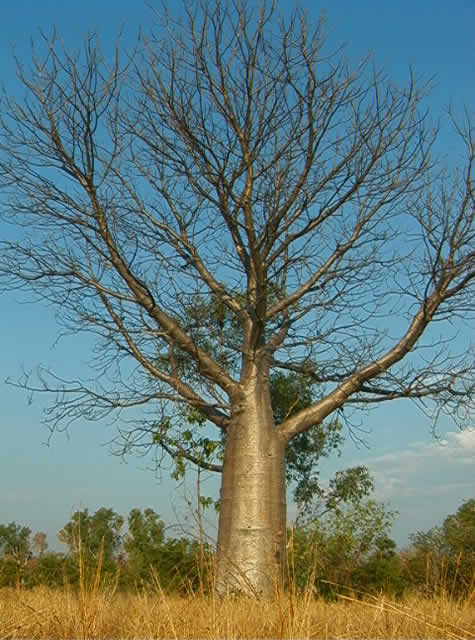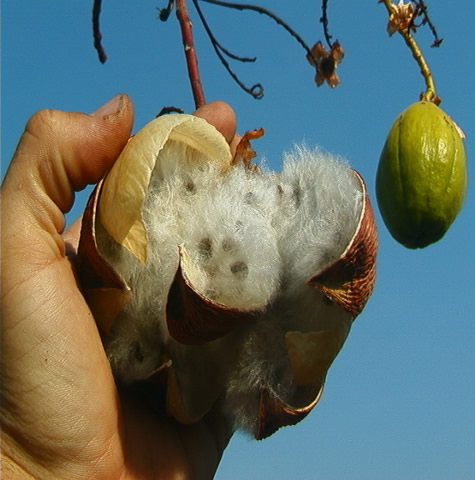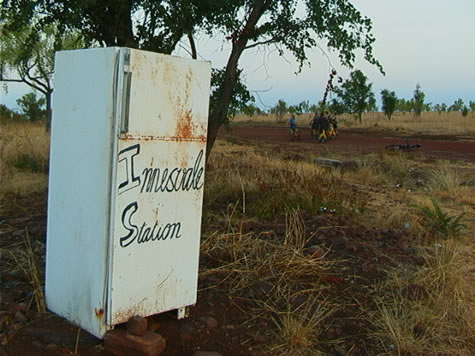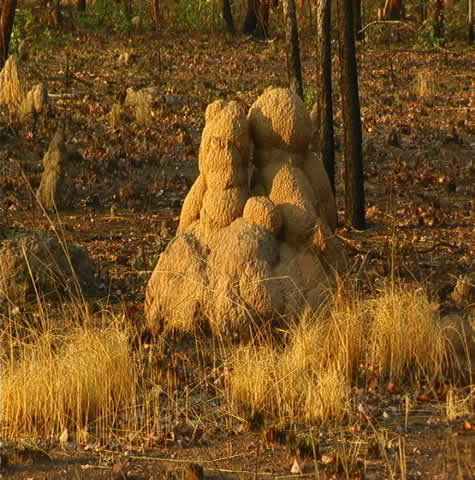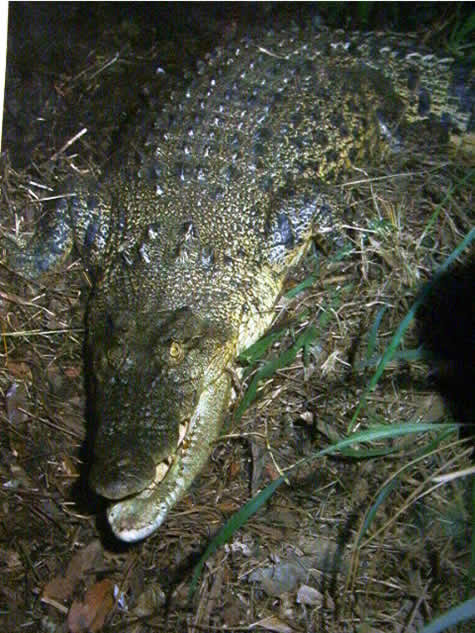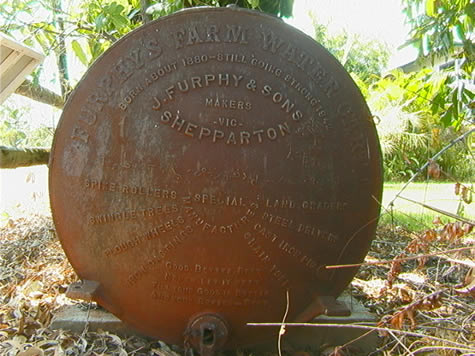Fish!
THEME: Victoria River District
SUBJECT AREAS: Environmental Studies
TOPIC: Fish!
2001 October 1, East bank of the Victoria River, Kalkaringi.
bel: “there are lots of little fishies in there . . .”
josh: “where there’s fish the water can’t be too bad . . .”
jason: “but the fish are trying to jump out . . .”
Both chemically and physically, the naturally occurring watercourses of inland Australia are an extremely unstable part of the ecosystem. Only the most adaptable fish species are capable of survival in the unpredictable conditions. The fish we saw ‘trying to jump out’ of the water at Gordy Creek, (six kilometres from Kalkaringi on the road to the Western Australian border) were possibly using evaporation to cool themselves in the heat of the late morning.
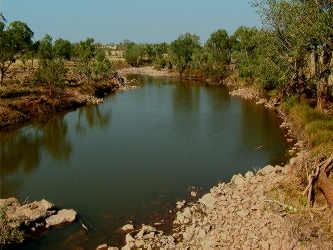
This is just one of the many adaptations which fish species such as the Goby, Eel-tailed Catfish, Hardyhead, Grunter, and Rainbow Fish, may have developed to cope with the many variable factors which regularly influence the watery environments of Central Australia. The major variables are:
* Salinity: The amount of salt in the water.
For comparison, seawater contains, on average, 35 parts salt per thousand. Salinities of inland waters can range from fresh, at one part per thousand, to hyper-saline, at 350 parts per thousand. Salinity can vary over this range in just two to six months.
* Water Level: Partial or complete drying up of rivers and pools.
Due to the infrequent and erratic rainfall of the central deserts, the vast majority of standing water holes and rivers are dry for several months each year. Fish need to be able to reproduce in a very short and unpredictable season, and sometimes must survive in shallow and crowded water.
* Temperature: How hot the water is, and how fast it changes temperature.
Water temperature can vary between three degrees Celsius overnight in winter, to thirty-five degrees Celsius in the middle of a summer day. Fish use the layered temperatures in a pool, congregating in the cooler vegetated side-shallows, or lying buried in the sediments, which line the bottom.
* Oxygen Saturation: How much air there is in the water.
Dissolved oxygen ranges from stagnant, at 0 per cent, to super-saturation at 192 per cent. The percentage of oxygen in a single body of water can regularly fluctuate from fifteen to eighty in a single day.
* Inundation: Flooding of land, which is usually completely dry, and of mostly dry watercourses.
While flooding benefits many species of fish and other flora and fauna, it also means the greatest times of change in each of the variables listed here, most especially salinity.
* Pollution: The amount of human waste dumped in waterways.
Especially in mining areas and around the larger towns and communities, pollution exhausts reserves of dissolved oxygen, and dumped toxins poison fish.
But it seems to us that the greatest mystery is how they all came to be here. When rivers are dry for half a year or more, how do fish suddenly appear with the first rains? During flood, fish travel large distances over land between rivers. It is also speculated that birds, such as pelicans, distribute them, but the chances of a live fish being able to travel by this method are slim.
Another theory which seems a little fantastic, is that of fish being transported through the air during storms:
- In 1909, in Caloundra, Queensland, there was a report of small fish rattling on a tin roof during a storm.
- Hundreds of gudgeons were seen in 1920 in the streets of Gulargambone, New South Wales.
- Small fish were observed in ponds in Marble Bar in Western Australia after severe storms in 1942.
- In 1971, on the airstrip at Hughendan, Queensland, numerous grunters fell between three and six a.m.
Too absurd? Who knows? – Truth is stranger than fiction after all . . .
bel
Suggested learning activities:
Choose one of the * points above (Salinity, Water Level, Temperature, Oxygen Saturation, Inundation, or Pollution) and explore it further. Look for its affect upon water reserves, and upon fish.
Explore a waterway or lake near your home. How do the features of the water change over the course of a year? What fish inhabit the water system? How do humans utilise the water? Comment on the pollution level of the water. Find out how far its catchment area extends, and where the water flows to.
